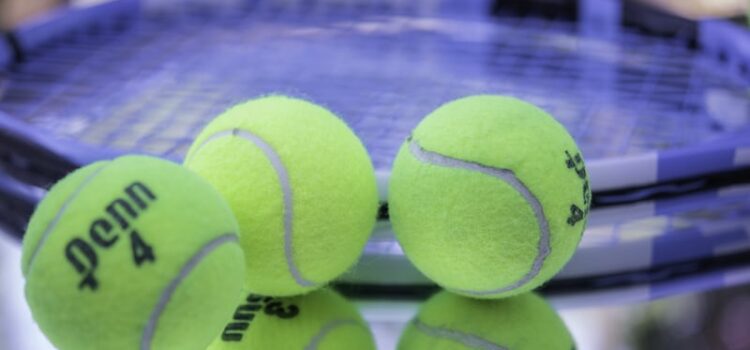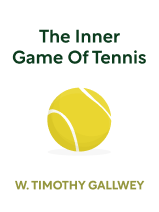

This article is an excerpt from the Shortform book guide to "The Inner Game of Tennis" by W. Timothy Gallwey. Shortform has the world's best summaries and analyses of books you should be reading.
Like this article? Sign up for a free trial here .
What are the best reasons to play sports? Do people have different reasons for playing sports?
There are many reasons to play sports. Even if you’re not being competitive, sports can benefit your health and help you make friends.
Keep reading for some key reasons to play sports.
Reasons to Play Sports
We are all consistently playing games with different goals. Your goals in your tennis match may not be the same as your opponent’s. To achieve your goals, you have to figure them out and then conquer the obstacles to success, external and internal, in front of you.
It’s obvious that there’s more than tennis happening on the court—players are constantly talking to themselves, talking to each other, getting exasperated…the list goes on.
There is also variety in how people feel about the game being played in front of them and inform peoples’ reasons to play sports. This includes varieties in motivation:
- Winning at all costs
- Wanting to look good on the court without caring about winning
- Not caring at all
These can affect play—for example, players who are ultra-concerned with winning at all costs might ironically be able to play very well until match or game points, at which time they have trouble closing.
There are also all kinds of subliminal games that are happening between players that are much more difficult to figure out.
As a player recognizes what (mostly ego-, Self-1-based) games she is playing with herself, she can discriminate and then discover what games she finds worth playing and what she doesn’t. Every game involves at least one player, goal, and obstacle.
Gallwey introduces three games, which he calls “Good-o,” “Friends-o,” and “Health-o-Fun-o.” Each of these have “subgames” and most people play hybrids. These are some of the main reasons to play sports.
Good-o: The general aim is to be excellent and the general motive is to prove you are “good.”
- The first “subgame” is “Perfect-o.”
- The question in this game is, “How good can I get?” The aim is perfection, which you measure against performance incentives that you set up for yourself.
- The motivation behind playing the game is wishing to prove yourself.
- The obstacles are the gap between your own idea of what perfect is and your abilities, as well as self-criticism that comes from not bridging that gap.
- The second subgame is “Compete-o.”
- The thesis is that “good” is measured against your opponent. All that matters is beating your opponent(s).
- The obstacles are that there’s always someone who can beat you, as well as the internal preoccupation with competition against others that can lead to an inferiority complex.
- The third subgame is “Image-o.”
- “Good” is measured not based on whether you win but by how confident, flashy, or good you look on the court. This is led by a desire for attention.
- The biggest obstacle is that it’s impossible to look good enough, which can lead to feelings of imagined loneliness because of your wish to please others.
Friends-o: The main aim is to make or deepen friendships.
- The first subgame is “Status-o.”
- This game is often derived from playing at a country club, where it matters most who you are playing with rather than how you’re playing. You are attempting to improve your social status.
- The obstacles here are mostly a fear of losing social position (along with in some cases not being able to afford the extravagance of the club or your tennis partners!).
- The second subgame is “Togetherness-o.”
- All of your good friends play tennis together and you want to maintain those relationships. Playing too well might jeopardize that.
- The difficulty is finding the right place, time, and friends, and being afraid of getting ostracized if you’re playing too well, too poorly, or if you can’t find a time that makes sense for you and your friends start gathering without you.
- The third subgame is “Husband-o or Wife-o.”
- Your partner is always playing, and you want to see them more.
- The obstacles are being good enough to play with your partner as well as internal doubts that loneliness you’re feeling in your marriage can be remedied on the court. Tennis is often used to bring people together, but sometimes there are problems in a marriage that go beyond what a tennis court is able to solve.
Health-o-Fun-o: Maintaining or improving mental or physical health and fun.
- The first subgame is “Health-o.”
- This is often at a doctor’s advice or part of a self-improvement kick—you are playing to relax your mind or exercise.
- The obstacles are finding someone who has similar motivations to play or doubts that tennis actually can help you.
- The second subgame is “Fun-o.”
- You don’t want to win or really get better. You just want to fool around on the court (it’s rare that this is anyone’s only motivation).
- The only obstacles are being pulled into other games.
- The third subgame is “Learn-o.”
- You are playing just to evolve and learn because you enjoy learning.
- Once again, the only obstacle is being pulled into other games.
Most “serious” tennis players are playing some version of “Good-o” as their reasons to play sports. People can begin at other places, but as they commit more time and energy to the sport, they begin to do things like set standards for themselves that are impossible to live up to. This has more to do with the way our society is constructed than anything else: Everything is achievement-oriented, so tennis has to be as well, especially because it is naturally a competition. Gallwey knows this to be true from his own childhood and how he managed to get over his will to win the match at all costs.
Once you know your reasons to play sports you’ll have an easier time motivating yourself and working on your mental game.

———End of Preview———
Like what you just read? Read the rest of the world's best book summary and analysis of W. Timothy Gallwey's "The Inner Game of Tennis" at Shortform .
Here's what you'll find in our full The Inner Game of Tennis summary :
- Why tennis is actually a mind game
- How to quiet the mind and concentrate intently
- Why your self-worth shouldn't be dependent on how you do in competition






